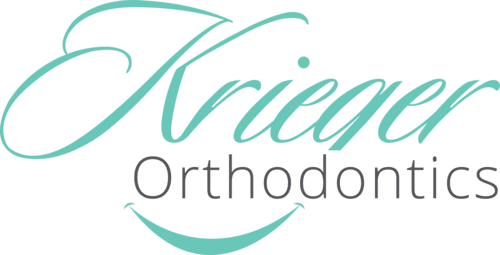Everyone wants that beautifully straight smile that traditional braces can give them, but getting there can sometimes be a challenge. One of those challenges is maintaining an effective dental hygiene routine. Braces can make it more difficult to clean your teeth thoroughly while brushing and flossing. If plaque is not removed daily, it builds up into a sticky film that produces bacteria that can lead to the minor gum disease known as gingivitis. Anyone can develop gingivitis, not just those wearing braces. In fact, more than 75% of Americans over the age of 35 are affected by gum disease. The good news is that gingivitis is reversible and you never need to wait until the end of your orthodontic treatment to get rid of it. At Krieger Orthodontics we want you to know what exactly gingivitis is and how you can reverse it once you have it. Keep reading the facts and tips below to find out more!
Braces, Plaque, and Gingivitis
It can prove to be much more severe when you accumulate plaque while you are in braces than when you are not. This is due in part to the way braces push food particles into the brackets when you bite. Some of this easily rinses out, but some debris can get caught in the tiny spaces between your gums, teeth, and brackets and become very difficult to clean effectively. Any plaque that is stuck near the gums can cause gingivitis because bacteria live and breed in it. Gingivitis is basically an immune reaction by your gums in an effort to keep bacteria at bay. It causes inflammation that results in swelling in the gums. This inflammation brings the capillaries closer to the surface, leading to possible bleeding and pain if left unchecked.
Orthodontics are a kind of controlled inflammation, as this helps the gums become more relaxed, making it easier to guide the teeth into their new positions. Since your gums will already be inflamed when you are in braces, it makes it even easier for bacteria to irritate them, as they are already under so much stress as they attempt to create an immune reaction. As you can see, it is really easy for inflammation to get out of hand if you are not careful, with the gums sometimes swelling enough to obstruct the brackets if left untreated. Other factors besides oral hygiene can increase the risk of developing gingivitis including a poor diet, broken fillings, genetics, and the use of tobacco. Some of the symptoms that accompany gingivitis are:
- Red, irritated, swollen gums
- Minor bleeding after brushing and flossing
- Tenderness in gums
- Noticeably bad breath
- Loose teeth
A condition called periodontitis may develop if gingivitis is not treated. Periodontitis is the more severe form of gum disease. Over time, the body attempts to naturally fight off the byproducts of the bacteria by breaking down the bone and connective tissues that hold the teeth in place. The gums begin to recede and pockets form in between the teeth, leading to potentially serious damage.Preventing Gingivitis While Wearing BracesBrushing and flossing thoroughly and regularly, along with the use of mouthwash, should be enough to stop gingivitis in its tracks. However, when a patient is in braces, the ordinary method of flossing can be difficult, if not impossible, and much less effective. Many people become frustrated and end up abandoning their flossing altogether, which of course creates a situation in which gingivitis is almost guaranteed to happen!
Our team at Krieger Orthodontics knows that brushing and flossing effectively can be difficult for people with fixed braces. Studies have shown that using an interdental brush is one of the best ways a patient in braces can remove plaque. Interdental brushes are thin, round or cone-shaped brushes with a small head of bristles held on by wire. Some of these brushes have short or specially shaped handles to make them easier to grip, while others have long handles that are similar to toothbrushes. They are designed to be inserted between the teeth gently, reaching those tight spaces where plaque is likely to build up. They do come in different sizes, so make sure you choose one that can comfortably fit in between your teeth without having to force it. Other actions you can take to help prevent gingivitis while in braces are:
- Use a Waterpik— a product that utilizes water pressure to floss teeth.
- Gargle with warm salt water to reduce any irritation your gums may have.
- Eat a healthy diet.
- Drink water with meals in order to help wash food particles away.
- Use an antibacterial mouth rinse.
Do not let a little plaque scare you away from straightening your teeth! By following Dr. Krieger’s advice and keeping a close eye on your oral hygiene, you will be ready to spot any dangerous dental signs before they get out of hand, and act on them accordingly. Remember that regular brushing and flossing is the best way to prevent plaque from breeding bacteria, it just takes a little extra effort when you are in braces.Here at Krieger Orthodontics, we care about you and your smile, and we want your orthodontic experience to be as comfortable as possible! If you notice any of the gingivitis symptoms we have talked about today, or if you are feeling any major discomfort with your braces, such as swollen gums, do not hesitate to get in touch with our office for help. We will check to see what is causing your discomfort and provide home care tips to keep your smile healthy. If you are in the Carrollton area, stop by our office in Lewisville or give us a call. We care about your smile and want your braces experience to be as comfortable as possible. We are ready to help you get on the track to that beautiful smile you deserve!




